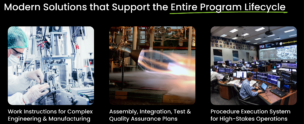Many aerospace companies promise to revolutionize space–but CesiumAstro and its phased array communication technology are delivering on its commitment.
By mastering the most challenging part of satellite technology first—the communication systems—this Austin-based company has raised $167M in backing from VC giants like Airbus Ventures and Kleiner Perkins. They’ve delivered their next-gen connectivity solutions to NASA, the Space Development Agency (SDA), and commercial partners worldwide.
In September, CesiumAstro’s unveiling of the Element satellite made headlines, showcasing the company’s “payload-first” strategy. While most space infrastructure players build satellites first and vertically integrate payloads to follow, CesiumAstro flipped the script.
As global demand for robust, multi-user connectivity surges, CesiumAstro isn’t just riding the wave, they’re creating it. Their vision for the future of space communications is already becoming reality.
Flipping the Space Industry Playbook
At the heart of CesiumAstro’s success is a bold departure from industry norms. While traditional satellite companies start with platforms and adapt communications later, CesiumAstro perfected their advanced communication technology first.
By making their phased array technology buildable using commercial manufacturing processes, CesiumAstro achieved what many thought impossible: space communication systems that can be produced at scale without compromising performance. This breakthrough slashed development times and gave CesiumAstro a critical edge in defense and commercial markets.
A Product Evolution from Components to Constellations
CesiumAstro’s product portfolio showcases a steady record of innovation, with each solution building on the success of the previous one. Every product reflects the company’s commitment to continuous improvement and customer-centric design. The company’s products include Nightingale, Vireo, Skylark, and Element.
Nightingale: Nightingale, the foundation of CesiumAstro’s advanced software-defined radio (SDR) technology, enables on-orbit reprogrammability and enhances mission flexibility. Achieving technology readiness level 9 in 2023, Nightingale has flight heritage in applications such as positioning, navigation, and timing and data download.
Vireo: Building on Nightingale’s technology, the Vireo payload offers integrated multi-beam RF capabilities, setting a new standard for high-data-throughput operations in space. Vireo is designed to support multi-user operations and is completing space qualification by the end of 2024 with planned missions in 2025.
Skylark: Purpose-built for mobility and in-flight connectivity, the Skylark SATCOM terminal enables high-speed, seamless data transfer across dynamic environments. Its adaptable design supports multiple form factors, making it versatile across multiple domains. Skylark is currently contracted for several upcoming missions and demonstrations, showcasing its robust performance across diverse applications.
Element: As the pinnacle of CesiumAstro’s innovation, Element is a fully integrated satellite that exemplifies the company’s “payload-first” philosophy. It incorporates CesiumAstro’s advanced software-enabled phased array payloads to deliver unmatched performance and adaptability.
Proven Success, Measured Growth
In an industry racing to scale, CesiumAstro takes the long view. This measured approach is paying off: the company’s innovations have already secured major wins across defense and commercial sectors.
Notable achievements since 2023 include:
- NASA’s Starling mission success, for which CesiumAstro’s CommPack payload enables groundbreaking spacecraft-to-spacecraft communication.
- Multiple contracts for SDA’s Tranche 2 constellation.
- Selection of the new Element satellite for SDA’s HALO program.
- Strategic partnerships with NASA and several others.
Strategic Scaling: Over the past 7 years, CesiumAstro has maintained a pattern of restraint by prioritizing quality over rapid growth. This measured approach keeps them ahead in the industry. Instead of expanding hastily, they have strategically:
- Grown to more than 250 employees, including engineers and scientists covering every major engineering discipline.
- Established two manufacturing and testing facilities in Texas and Colorado, accelerating production to meet rising demand.
Looking to the future, they aim to continue this balanced growth by:
- Completing a 200,000 square-foot manufacturing headquarters set to open in 2026.
- Further expanding their international presence while enhancing existing facilities in California and London.
This blend of innovation and deliberate growth positions CesiumAstro to capture an increasing share of the rapidly expanding space communications market.
Delivering the Future of Space Communications
The space economy is at an inflection point. As thousands of new satellites launch annually, the need for reliable, high-performance communication systems has never been greater. CesiumAstro isn’t just meeting this demand—they’re helping shape how the industry evolves.
With their proven technology already selected for multiple defense and commercial missions over the next several years, CesiumAstro is positioned to lead the next wave of space communication advancement. Their expanding capabilities across the RF spectrum, combined with a unique approach to satellite integration, point to a future in which space-based communication is faster, more reliable, and more accessible than ever before.




